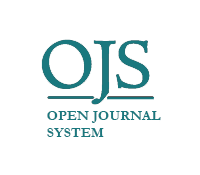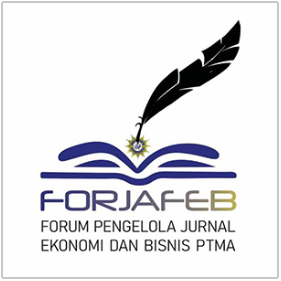Intellectual Capital And Cost Stickiness: A Modified Value Added Intellectual Coefficient (Mvaic) Approach
DOI:
https://doi.org/10.22219/jrak.v11i2.17432Keywords:
Cost Stickiness, Intellectual Capital, MVAICAbstract
This study aims to provide empirical evidence about the relationship between intellectual capital and cost stickiness. Intellectual Capital has been widely studied about its effect on company performance, but still not much has been studied about its effect on cost behavior. Intellectual Capital in this study uses the Modified Value Added Intellectual Capital (MVAIC) approach. The population in this study were all manufacturing companies listed on the Indonesia Stock Exchange (IDX) in 2017 - 2018. The sample in this study was 119 companies which were selected through purposive sampling. The results of this study indicate that the intellectual capital carried out by the company is able to reduce the level of cost stickiness in manufacturing companies in Indonesia. In practice, the IC carried out by the company is able to reduce cost stickiness, so that it can improve the financial performance of the firm.
Downloads
References
Anderson, M. C., Banker, R. D., & Janakiraman, S. N. (2003). Are selling, general, and administrative costs “sticky”? Journal of accounting research, 41(1), 47-63.
Balakrishnan, R., & Gruca, T. S. (2008). Cost stickiness and core competency: A note. Contemporary Accounting Research, Forthcoming.
Banerjee, S., & Srivastava, D. (2017). Innovation, Organisational Structure, and Culture: Its Impact and Linkage on Organization-A Review. International Journal of Civic Engagement and Social Change (IJCESC), 4(1), 1-22.
Banker, R. D., Byzalov, D., & Chen, L. T. (2013). Employment protection legislation, adjustment costs and cross-country differences in cost behavior. Journal of Accounting and Economics, 55(1), 111-127.
Chen, Y.-S. (2008). The positive effect of green intellectual capital on competitive advantages of firms. Journal of business ethics, 77(3), 271-286.
Chen, Y.-S., James Lin, M.-J., & Chang, C.-H. (2006). The influence of intellectual capital on new product development performance–the manufacturing companies of Taiwan as an example. Total Quality Management and Business Excellence, 17(10), 1323-1339.
Cheung, J. H., Hur, K. S., & Park, S. J. (2019). Are capitalized R&D and expensed R&D costs “sticky”? Korean evidence. Invest. Manag. Financ. Innov, 16, 89-100.
Chu, P. Y., Lin, Y. L., Hsiung, H. H., & Liu, T. Y. (2006). Intellectual capital: An empirical study of ITRI. Technological Forecasting and Social Change, 73(7), 886-902.
Haris, M., Yao, H., Tariq, G., Malik, A., & Javaid, H. M. (2019). Intellectual capital performance and profitability of banks: Evidence from pakistan. Journal of Risk and Financial Management, 12(2), 56.
Hartlieb, S., Loy, T. R., & Eierle, B. (2019). Does community social capital affect asymmetric cost behaviour? Management Accounting Research, 100640.
Herremans, I. M., Isaac, R. G., Kline, T. J., & Nazari, J. A. (2011). Intellectual capital and uncertainty of knowledge: control by design of the management system. Journal of business ethics, 98(4), 627-640.
Hsu, Y.-H., & Fang, W. (2009). Intellectual capital and new product development performance: The mediating role of organizational learning capability. Technological Forecasting and Social Change, 76(5), 664-677.
Inkinen, H. (2015). Review of empirical research on intellectual capital and firm performance. Journal of Intellectual capital.
Irsyahma, A., & Nikmah, N. (2017). Intellectual Capital, Firm Value, and Financial Performance. AFEBI Accounting Review, 1(01), 29-43.
Mohammadi, A., & Taherkhani, P. (2017). Organizational capital, intellectual capital and cost stickiness (evidence from Iran). Journal of Intellectual capital.
Namvar, M., Fathian, M., Akhavan, P., & Gholamian, M. R. (2010). Exploring the impacts of intellectual property on intellectual capital and company performance: The case of Iranian computer and electronic organizations. Management decision, 48(5), 676-697.
Nimtrakoon, S. (2015). The relationship between intellectual capital, firms’ market value and financial performance. Journal of Intellectual capital.
Phusavat, K., Comepa, N., Sitko‐Lutek, A., & Ooi, K. B. (2011). Interrelationships between intellectual capital and performance. Industrial Management & Data Systems.
Purnamasari, P., & Umiyati, I. (2019). ASYMMETRIC COST BEHAVIOR AND CHOICE OF STRATEGY. Jurnal Reviu Akuntansi dan Keuangan, 9(1), 24-33.
Shih, C.-P., Chen, W.-C., & Morrison, M. (2009). The impact of intellectual capital on business performance in Taiwanese design industry. Paper presented at the The 2009 International Conference on Human Resource Development (2009 IHRD).
Ståhle, P., Ståhle, S., & Aho, S. (2011). Value added intellectual coefficient (VAIC): a critical analysis. Journal of Intellectual capital, 12(4), 531-551.
Stewart, T. A. (1997). Intellectual capital: the new wealth of organizations, Bantam Doubleday Dell Publishing Group. Inc., New York, NY.
Sydler, R., Haefliger, S., & Pruksa, R. (2014). Measuring intellectual capital with financial figures: Can we predict firm profitability? European Management Journal, 32(2), 244-259.
Ulum, I. (2017). INTELLECTUAL CAPITAL: Model Pengukuran, Framework Pengungkapan& Kinerja Organisasi: UMMPress.
Widyastuti, A., & Aprilia, S. (2019). INTELLECTUAL CAPITAL DISCLOSURE (ICD): A COMPARISON BETWEEN INDONESIAN AND CHINESE UNIVERSITIES. Jurnal Akademi Akuntansi, 2(2), 1-12.
Downloads
Published
Issue
Section
License
Copyright (c) 2021 Dwi Irawan

This work is licensed under a Creative Commons Attribution 4.0 International License.

Jurnal Reviu Akuntansi dan Keuangan is licensed under a Creative Commons Attribution-NonCommercial-ShareAlike 4.0 International License.
Authors who publish with this journal agree to the following terms:
- Authors retain copyright and grant the journal right of first publication with the work simultaneously licensed under a Creative Commons Attribution-NonCommercial-ShareAlike 4.0 International License that allows others to share the work with an acknowledgement of the work's authorship and initial publication in this journal.
- Authors are able to enter into separate, additional contractual arrangements for the non-exclusive distribution of the journal's published version of the work (e.g., post it to an institutional repository or publish it in a book), with an acknowledgement of its initial publication in this journal.
- Authors are permitted and encouraged to post their work online (e.g., in institutional repositories or on their website) prior to and during the submission process, as it can lead to productive exchanges, as well as earlier and greater citation of published work (See The Effect of Open Access).










